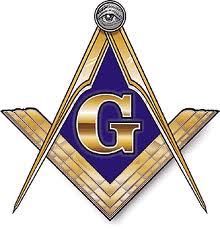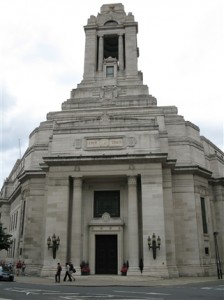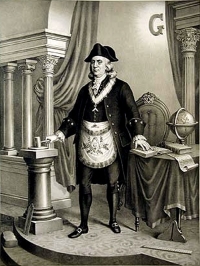Freemason History
 The history of the Freemasons can be traced back to the medieval stonemasons responsible for building Castles and Cathedrals in Europe. The organization grew as a trade or craft guild with a strong sense of moral standards. Modern Freemason initiation ritual states that the order was founded on 3 grand principles, brotherly love, relief, and truth. The oldest Masonic text is an 1390 poem titled “Religious Manuscript.” Some of the details in the 64 page poem include the origin and spread of Geometry, the use of child labor in Egypt, and how masonry was brought to England in 924. The manuscript also put forth a set of moral and professional rules for Freemasons to follow including:
The history of the Freemasons can be traced back to the medieval stonemasons responsible for building Castles and Cathedrals in Europe. The organization grew as a trade or craft guild with a strong sense of moral standards. Modern Freemason initiation ritual states that the order was founded on 3 grand principles, brotherly love, relief, and truth. The oldest Masonic text is an 1390 poem titled “Religious Manuscript.” Some of the details in the 64 page poem include the origin and spread of Geometry, the use of child labor in Egypt, and how masonry was brought to England in 924. The manuscript also put forth a set of moral and professional rules for Freemasons to follow including:
- Do not take bribes
- Do not harbour thieves
- Attend church regularly
- Do not take work you cannot finish
- Do not make your masons work at night
- Teach apprentices correctly
The first masonic regalia can be traced to around 1450. Two silver mounted girdles were found, one of which had B and I embroidered in the middle alluding to both the twin pillars of Solomon’s Temple as well as the words to the first 2 degrees of Freemasonry: Boaz and Jachin. Throughout the 1500s, the government remained the main employer of Masons, although the Church was starting to employ large numbers as well. In 1598, Scottish mason William Schaw drafted the first set of statutes set out to govern Masons. His statutes included honesty and charitable living among members. They also were the first written mention of Wardens, Deacons, and the Entered Apprentices. Schaw later released a second set of statutes recognizing the Grand Lodge of Scotland and the Lodge of Kilwinning. These 2 scottish lodges are still operational today.
History of Lodges
Freemasonry is organized into Masonic Lodges. The first known Lodges are found in Scotland dating to the late 16th century. In 1717, the Grand Lodge of England was founded in London when 4 individual lodges combined. The drastic changes to masonic rituals made by the Grand Lodge of England in 1751 led to the formation of a rival lodge, The Ancient Grand Lodge of England. For 65 years, the 2 lodges fought for supremacy until the United Grand Lodge of England was founded in 1813. With the colonization of America, Freemasonry spread and lodges were formed within each state. The political independence of each state also meant that the Freemasons would not form a lodge to oversee the individual state lodges.
Freemasonry in America
In 1730, Benjamin Franklin, acting as Provincial Grand Master of Pennsylvania, wrote in the Pennsylvania Gazette that a group of several lodges were starting a province and joining the St. John’s Lodge in Pennsylvania. In 1733, St. John’s Lodge was chartered by Henry Price and the Grand Lodge of England. Over the next 4 years, the Grand Lodge of England also chartered Grand Lodges in Massachusetts, New York, South Carolina, and Pennsylvania. Some Masons at the time include:
- Benjamin Franklin
- John Hancock
- George Washington
- Paul Revere
- James Madison
- Thomas Jefferson
The Declaration of Independence was signed by 15 American Masons (of 56 signers) and the Constitution had 28 Freemason signers (of 40).

